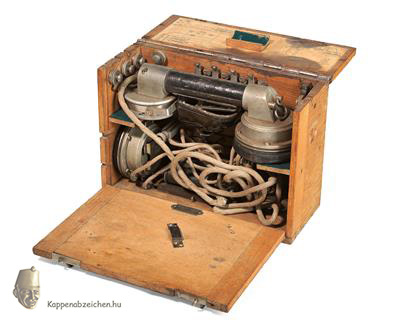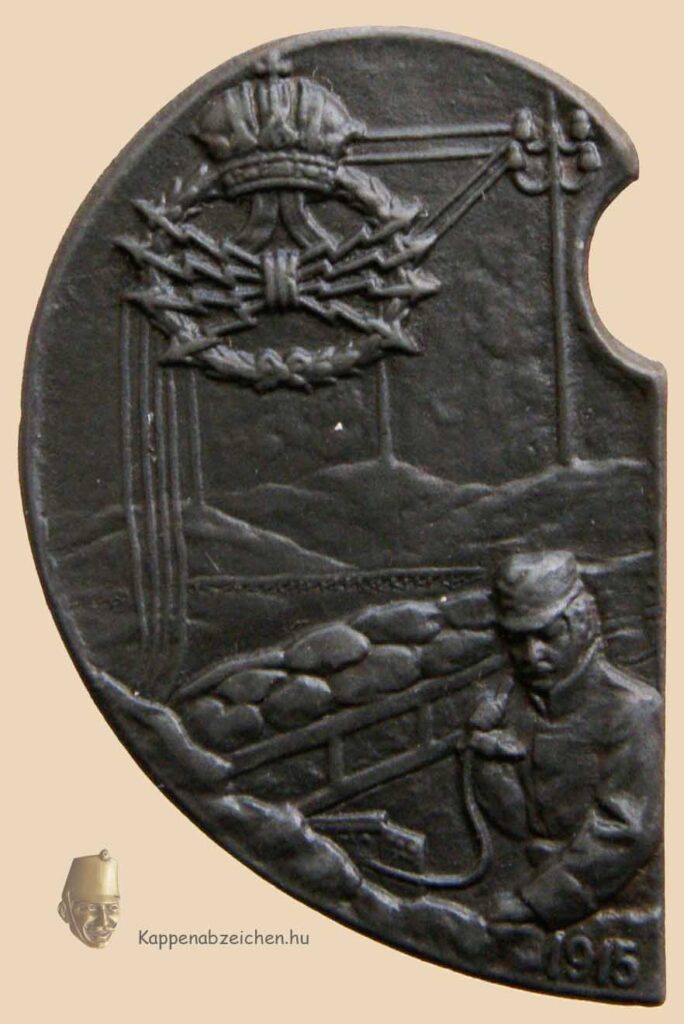Field telephone
In the trench battles of the Great War, constant communication between troop units, observers and headquarters was critically important. In the artillery, for example, the officer observing the targets continuously informed the batteries located further back, under cover, about the accuracy of the hits or the movement of the enemy during the fire. In this way, the aim of the gun could be refined or recalibrated. Equally important was the connection of the companies with the higher (battalion) commands. In the event of an enemy attack, they were able to provide information on the current frontline situation, request artillery support, and resort to sending reinforcements. Communication was carried out using field telephones. Of course, the telephone lines were often interrupted by enemy artillery. In such cases, the telephone operators had to detect and eliminate the error, often in the open field, under enemy fire.

During the Great War, the telephone had already been in use for several decades and was also introduced in the armed forces. The Monarchy’s army used portable telephone sets. These were all locally powered devices. In order to be transportable, the devices were placed in a wooden and later in a vinyl box, to which a carrying strap was attached. By opening the top of the box, the telephone receiver and the operating organs could be used immediately. The device also included the inductor powering the ringing tone and a replaceable long-lasting battery. The devices were connected to each other by an insulated cable. Less often, and in the case of higher headquarters, the devices were connected to a telephone exchange. During the Great War, telephones operating according to the above general principles were produced by many companies.

Several types of insignia were made for communication (telephone) soldiers. I chose the badge presented here because of its special shape and beautiful design. It was manufactured by the Viennese Brüder Schneider company. Another interesting feature is the depiction of the communication troops’ lapel insignia in the upper part of the badge.




